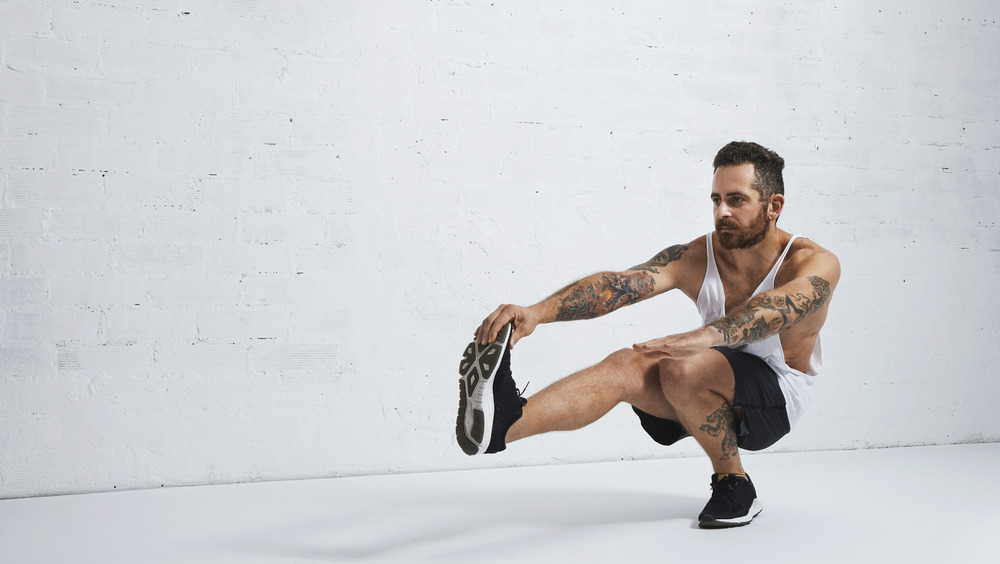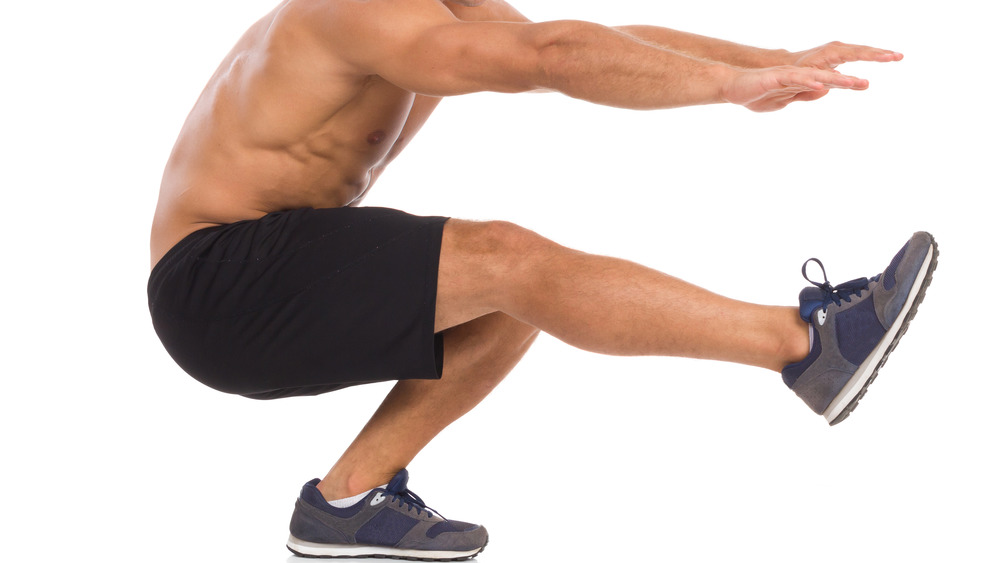The Real Difference Between Single Leg Squats And Regular Squats
If you've ever walked into a bootcamp class and seen that single leg squats were part of that day's workout, you know exactly how different those squats are from a regular squat. They're not only harder in terms of balance, they work different muscles (while still working the muscles you would use in a normal squat).
A single leg squat is exactly what it sounds like: Standing with your weight on your right foot, you'll leave your left foot in the air in front of you while squatting down on your right leg, then return to standing. This challenges your balance — don't expect to get as low as you would in a normal squat — while working the muscles in your calves, glutes, thighs, and even abdominals, thanks to the balance component (via Healthline).
It's a great way to keep expanding your bodyweight workouts at home, since it's difficult enough without adding any other challenges, and balancing strength moves like this are great ways to learn better body control and work deep into core muscles (via Outside).
How do you do a single leg squat?
This is a challenging move even if you're not holding weights or kettlebells, so before you attempt a single leg squat, make sure that you're comfortable doing a regular squat. Then, expect to only sink a few inches before needing to come back up in your first attempts at a single leg squat. Using assistance, like holding onto a pole or doorway on your way down and up, squatting onto a chair, or actually holding a weight out in front of you as a counterbalance can help you quickly make progress on single leg squats (via Breaking Muscle). You can also do a one-leg squat while standing on a box, and allow your free leg to hang down rather than need to be pressed out in front of you (via StrengthCoach.com)
If you want to progress your single leg squat even more, focus on keeping your leg that's in the air straight out in front of you as you squat down and come back up in the variation referred to as a pistol squat (via Runner's World). Again, you may need to use a pole, chair, or counterweight as you get started.


